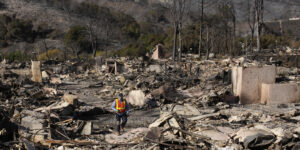Another round of setting homeowner insurance policy rates in North Carolina has begun with the industry seeking a 42.2 percent average statewide premium increase that would begin in the summer.
The North Carolina Rate Bureau, which represents insurance companies, notified the state Insurance Department last week of its rate-filing request, the department said in a statement that also announced a public comment period on the proposal through Feb. 2.
The bureau — an entity created by the state that’s not a part of state government — filed over 2,000 pages of documents that describe their rate requests, which vary by county and region. The bureau wants the rate changes to begin Aug. 1.
Should the Department of Insurance fail to agree with the proposals, the agency will either deny the rates or negotiate with the bureau. Insurance Commissioner Mike Causey will call for a formal public hearing on the requests if a settlement can’t be reached in 50 days of the filing, the department said. His decision on rate requests after the hearing can be appealed to court.
Recent history has shown that final agreed-upon average rate increases can be significantly lower than what the bureau requested.
During the last round on homeowners’ policies that began in November 2020, the bureau sought an overall average increase of 24.5 percent. But a settlement with the bureau signed by Causey in November 2021 resulted in a 7.9 percent average increase.
Last week’s bureau filing offered stark differences in proposed increases depending on where a homeowner lives. The bureau proposed an increase of 99.4 percent for properties in the beach areas within Brunswick, Carteret, New Hanover, Onslow and Pender counties — where structures are at greater risks from storms. Proposed increases on inland properties in those same counties would be 71.4 percent or 43 percent, depending on the ZIP code.
The bureau’s proposals in nearly a dozen far northwestern and far western counties, however, ranged from 4.3 percent to 8.5 percent. Proposed premium increases in Raleigh and Durham (39.8 percent), Greensboro and Winston-Salem (36.6 percent) and Charlotte (41.3 percent) were higher.





















 Leading Insurance Innovation in the AI Age (Part 1: Culture)
Leading Insurance Innovation in the AI Age (Part 1: Culture)  As Life Shifts Gears, Insurance CEO Chases Racing Dream
As Life Shifts Gears, Insurance CEO Chases Racing Dream  First 2025 Atlantic Hurricane Season Forecasts 7 Named Storms
First 2025 Atlantic Hurricane Season Forecasts 7 Named Storms  Future of Jobs: Claims Adjuster Among Fastest Declining Professions
Future of Jobs: Claims Adjuster Among Fastest Declining Professions 




